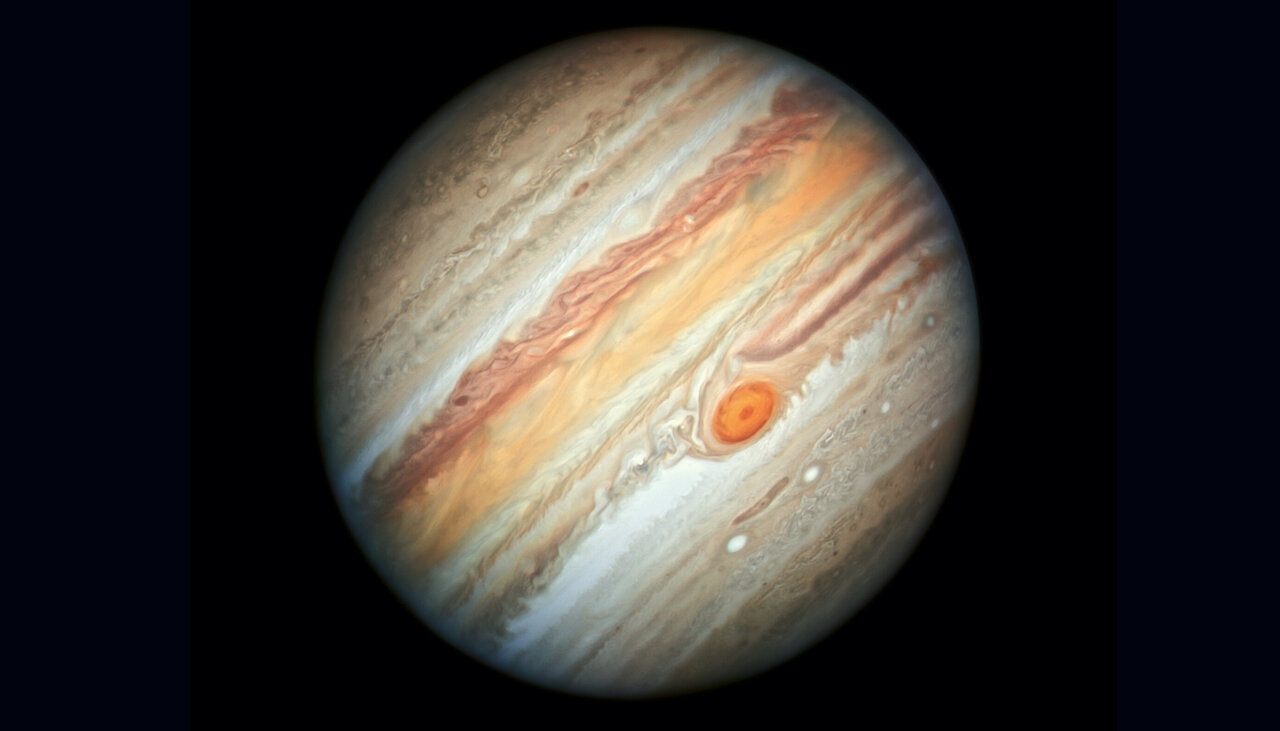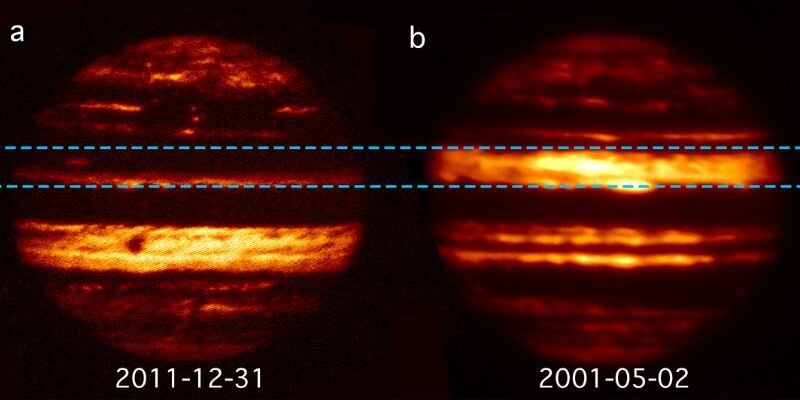Scientists have solved the mystery of why the stripes in the atmosphere of Jupiter have a different direction of rotation. They also understood why they started to change rapidly every few years. The currents in the magnetic field of the giant planet were to blame for everything.

Stripes on Jupiter behave strangely
The Juno mission recently helped solve another mystery of the magnetic field of Jupiter, the largest planet in the Solar System. It is related to the behavior of its atmosphere. Very strong latitudinal winds blow in it, which lengthen the clouds along the equator. As a result, they take the form of stripes, which, together with vortices, such as the Great Red Spot, are the main features of the appearance of the planet.
At the same time, winds blow in different directions at different latitudes of Jupiter. At the equator, they have an eastern direction, but as they shift to the north and south, they acquire a western direction. Then everything changes again and closer to the poles they blow east again.
But that’s not all. Once every 4-5 years, striking changes occur with the stripes in the atmosphere of Jupiter. The stripes begin to change their color. And sometimes real disasters occur, as a result of which the weather is completely destroyed and the cloud belts are mixed.
What causes the changes
Scientists have been able to determine even earlier that these changes are in a certain way related to the fluctuation of infrared radiation at a depth of 50 km below the surface of the planet. And it, in turn, is caused by currents, which are caused by changes in the magnetic field of the planet.
Juno has been studying it for many years. It turned out to be much more durable than its designers expected and resistant to the radiation belts of a giant planet. These observations became the basis of the conclusions that the scientists made in the new study.
“It is possible to get wavelike motions in a planetary magnetic field which are called torsional oscillations. The exciting thing is that when we calculated the periods of these torsional oscillations, they corresponded to the periods that you see in the infrared radiation on Jupiter,” said Chris Jones, who is one of the two co-authors of the study.

Changes in Jupiter’s magnetic field
In particular, scientists are tracking an interesting section of Jupiter’s magnetic field, which is called the Great Blue Spot, although the colors in its case are conditional. It’s just a point in the magnetic field of a giant planet with special characteristics.
The Great Blue Spot has been moving eastward in recent years. However, recently it has begun to slow down. Scientists believe that this is the beginning of an oscillation. It will cause a huge amount of torsional oscillations, which will once again break and mix the colored lines on Jupiter.
In general, scientists have already understood how changes in the upper layers of the atmosphere are related to the processes that occur in its depths. The only mystery remains the specific mechanism of converting magnetic oscillations into infrared radiation. Future research will help you get an idea about it.
According to phys.org
Follow us on Twitter to get the most interesting space news in time
https://twitter.com/ust_magazine

